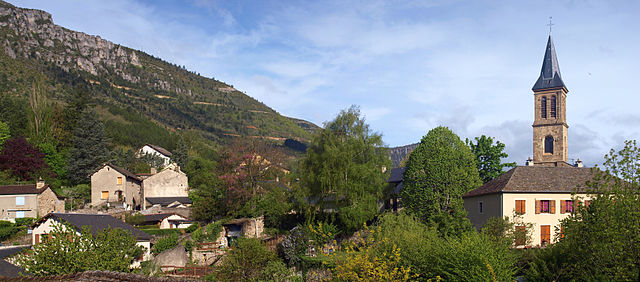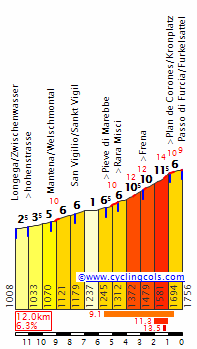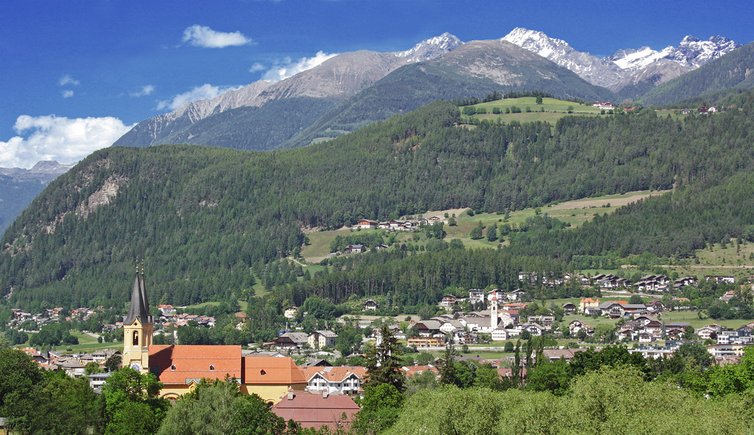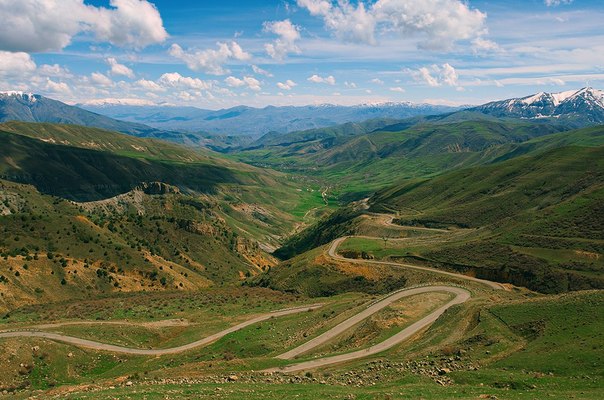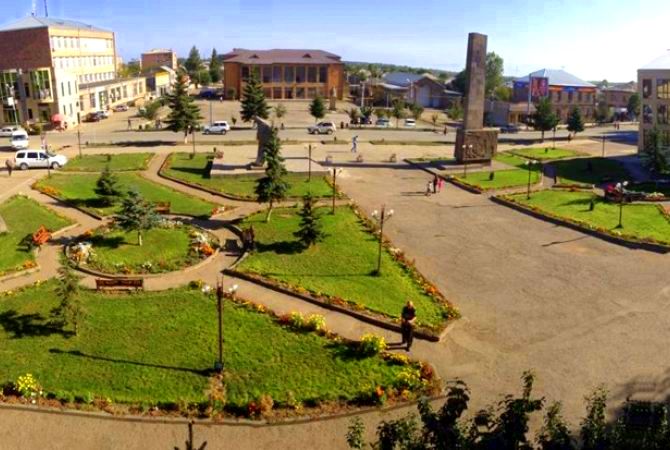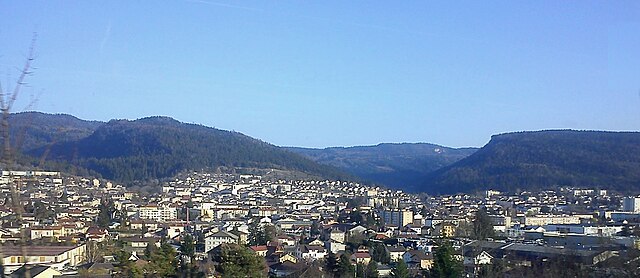- Feb 20, 2010
- 33,094
- 15,338
- 28,180
To try to break up my stream of GTs (I have a Tour in the works, or rather actually complete but not feeling like starting) I've decided on a couple of short stage races in the break.
This is an attempt at a short stage rage which would be actually achievable as a .1 or .2 race; not super difficult but enough for the kind of field it draws; not using the absolute toughest racing terrain of its homeland but staying close enough to population centres to be realistically achievable, and somewhere where there is interesting enough terrain that there could reasonably be good reason to want to see racing there.
Much as with the recent Tour of Cambodia I have turned to the much-maligned Asia Tour for ideas, and following the recent Tour d'Azerbaïdjan I've decided to put a race in their near neighbours, that most maligned of countries, Armenia. Given its terrain and its proximity to some areas that enjoy cycling (the northwestern corner of Iran is the Iranian Azerbaijan region that serves as the country's main hub of the sport) it is perhaps surprising how little the country has contributed to cycling; a legacy even during the Soviet era eludes them. Perhaps it's to do with a limited road infrastructure, perhaps to do with the constant antagonism with neighbouring countries (the border between Armenia and Azerbaijan remains closed to this day, there is of course the Nagorno-Karabakh question, and the country's relationship with Turkey remains clouded by the infamous Armenian genocide of a century ago, a major point of importance in the turbulent history of the oldest Christian nation, as well as that the great Armenian national symbol, Mount Ararat, lies on Turkish territory.
My race is designed as a difficult 2.2 race; although it had the registration of the CKT-Champion System team a few years ago, Armenian cycling is still in its developing stages. Despite the national disputes, I would expect to see Synergy Baku and Törku probably turn up to this race, along with a few of the Russian and Ukrainian development teams, Astana City, the Iranian motorbikes, and some national squads from the region. If we're lucky maybe some of the Arabian Peninsula teams could bring some star value, otherwise it may be the likes of SP Tableware, Cycling Club Bourgas and Tusnad that are called upon to make up the lineup. Placing it between the Tour of Azerbaijan and the Tour of Iran may be best, so around this time of year, to try to get as large a participation as possible. The Armenian national squad took on the Tour of Iran last year, so cycling can transcend the political/religious boundaries. I have tried to stay close to sizable urban centres, use good roads (sadly this means no Aragats climb, as the road is almost unusably narrow) and keep away from contentious border disputes so as to make this an actually achievable race. Therefore it is not a "the best of what roads in Armenia could offer for cycling" route as much as an "I genuinely think cycling could develop here, and this is a route I think could be feasible to help with that" route. It is, like a few of the Iranian races, a six day race, which starts and ends in the capital, Yerevan.
Tour of Armenia
Stage 1: Yerevan - Gyumri, 150km


The opening stage of the Tour of Armenia is a relatively benign one, although while it ends in a lengthy period of flat, not all sprinters will last the distance here, especially in the relatively mixed fields you often find on the Asia Tour.
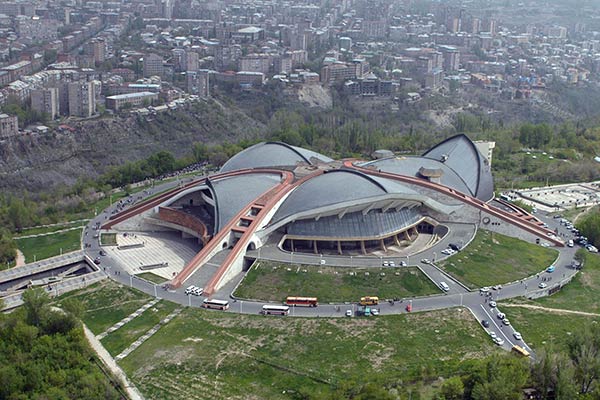
The race begins at the Karen Demirchyan Sports and Music Complex (or simply "Hamalir" ("Complex") in Armenian), a large cultural centre and sporting venue opened in the 1980s and renamed after former parliament speaker Karen Demirchyan, one of those assassinated in the parliament shootings in 1999. The pre-race can therefore include an acknowledgement at the nearby Armenian Genocide Memorial if desired.

The actual stage sees the riders head around the southern and western base of Mount Aragats, the highest point in modern Armenia. This colossus overlooks Yerevan from the north, and was therefore part of one of the toughest stages of Steven Roots' Silk Road Tour. Here we bypass it, instead heading along the plateau (around 900-1000m above sea level) through towns like Armavir before transitioning to the higher plateau (around 1500-1600m above sea level) where we're finishing by way of two gradual climbs, the first being significantly longer and therefore garnering the higher categorization. There are some dramatic sights here, such as the remains of the 10th-century Dashtadem Fortress, but once we're done with the uphill, there's nearly 50km still remaining and with none of the climbing really having got up above 5-6%, this will be more about attrition than really putting the hurt on. Nevertheless, altitude can play a role; we're not used to flat stages this high up, although we certainly won't be seeing the kind of effect that you see in Qinghai Lake or Colorado.

The stage finish comes in the city of Gyumri, the second largest city in the country with a population of 120.000. It is also the hometown of perhaps the one famous cyclist Armenia has produced, although he elected to represent Russia after the fall of the Soviet Union - Vyacheslav Djavanian. Djavanian was born in Gyumri in 1969 and went on to moderate success in the 90s with Sputnik, Roslotto and eventually Big Mat-Auber '93. His greatest triumph was the overall win at the 1996 Tour de Pologne, but he also managed 2nd (behind Tonkov) in the Settimana Bergamasca, an overall GC win at the Vuelta a Uruguay, and entered five GTs (two Giri, two Tours and a Vuelta) albeit without success. Djavanian's strength was from somewhat reduced groups, so hopefully he'll be on hand to watch the same thing pan out here as we finish with a fast city centre circuit taking in the sights of the city before finishing at Vartanants Square (the finish will be on the top right corner of the square as per below:

This is an attempt at a short stage rage which would be actually achievable as a .1 or .2 race; not super difficult but enough for the kind of field it draws; not using the absolute toughest racing terrain of its homeland but staying close enough to population centres to be realistically achievable, and somewhere where there is interesting enough terrain that there could reasonably be good reason to want to see racing there.
Much as with the recent Tour of Cambodia I have turned to the much-maligned Asia Tour for ideas, and following the recent Tour d'Azerbaïdjan I've decided to put a race in their near neighbours, that most maligned of countries, Armenia. Given its terrain and its proximity to some areas that enjoy cycling (the northwestern corner of Iran is the Iranian Azerbaijan region that serves as the country's main hub of the sport) it is perhaps surprising how little the country has contributed to cycling; a legacy even during the Soviet era eludes them. Perhaps it's to do with a limited road infrastructure, perhaps to do with the constant antagonism with neighbouring countries (the border between Armenia and Azerbaijan remains closed to this day, there is of course the Nagorno-Karabakh question, and the country's relationship with Turkey remains clouded by the infamous Armenian genocide of a century ago, a major point of importance in the turbulent history of the oldest Christian nation, as well as that the great Armenian national symbol, Mount Ararat, lies on Turkish territory.
My race is designed as a difficult 2.2 race; although it had the registration of the CKT-Champion System team a few years ago, Armenian cycling is still in its developing stages. Despite the national disputes, I would expect to see Synergy Baku and Törku probably turn up to this race, along with a few of the Russian and Ukrainian development teams, Astana City, the Iranian motorbikes, and some national squads from the region. If we're lucky maybe some of the Arabian Peninsula teams could bring some star value, otherwise it may be the likes of SP Tableware, Cycling Club Bourgas and Tusnad that are called upon to make up the lineup. Placing it between the Tour of Azerbaijan and the Tour of Iran may be best, so around this time of year, to try to get as large a participation as possible. The Armenian national squad took on the Tour of Iran last year, so cycling can transcend the political/religious boundaries. I have tried to stay close to sizable urban centres, use good roads (sadly this means no Aragats climb, as the road is almost unusably narrow) and keep away from contentious border disputes so as to make this an actually achievable race. Therefore it is not a "the best of what roads in Armenia could offer for cycling" route as much as an "I genuinely think cycling could develop here, and this is a route I think could be feasible to help with that" route. It is, like a few of the Iranian races, a six day race, which starts and ends in the capital, Yerevan.
Tour of Armenia
Stage 1: Yerevan - Gyumri, 150km


The opening stage of the Tour of Armenia is a relatively benign one, although while it ends in a lengthy period of flat, not all sprinters will last the distance here, especially in the relatively mixed fields you often find on the Asia Tour.

The race begins at the Karen Demirchyan Sports and Music Complex (or simply "Hamalir" ("Complex") in Armenian), a large cultural centre and sporting venue opened in the 1980s and renamed after former parliament speaker Karen Demirchyan, one of those assassinated in the parliament shootings in 1999. The pre-race can therefore include an acknowledgement at the nearby Armenian Genocide Memorial if desired.

The actual stage sees the riders head around the southern and western base of Mount Aragats, the highest point in modern Armenia. This colossus overlooks Yerevan from the north, and was therefore part of one of the toughest stages of Steven Roots' Silk Road Tour. Here we bypass it, instead heading along the plateau (around 900-1000m above sea level) through towns like Armavir before transitioning to the higher plateau (around 1500-1600m above sea level) where we're finishing by way of two gradual climbs, the first being significantly longer and therefore garnering the higher categorization. There are some dramatic sights here, such as the remains of the 10th-century Dashtadem Fortress, but once we're done with the uphill, there's nearly 50km still remaining and with none of the climbing really having got up above 5-6%, this will be more about attrition than really putting the hurt on. Nevertheless, altitude can play a role; we're not used to flat stages this high up, although we certainly won't be seeing the kind of effect that you see in Qinghai Lake or Colorado.

The stage finish comes in the city of Gyumri, the second largest city in the country with a population of 120.000. It is also the hometown of perhaps the one famous cyclist Armenia has produced, although he elected to represent Russia after the fall of the Soviet Union - Vyacheslav Djavanian. Djavanian was born in Gyumri in 1969 and went on to moderate success in the 90s with Sputnik, Roslotto and eventually Big Mat-Auber '93. His greatest triumph was the overall win at the 1996 Tour de Pologne, but he also managed 2nd (behind Tonkov) in the Settimana Bergamasca, an overall GC win at the Vuelta a Uruguay, and entered five GTs (two Giri, two Tours and a Vuelta) albeit without success. Djavanian's strength was from somewhat reduced groups, so hopefully he'll be on hand to watch the same thing pan out here as we finish with a fast city centre circuit taking in the sights of the city before finishing at Vartanants Square (the finish will be on the top right corner of the square as per below:






























